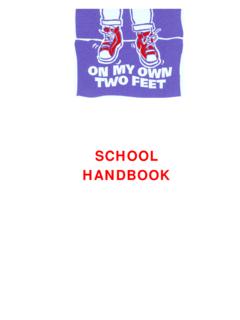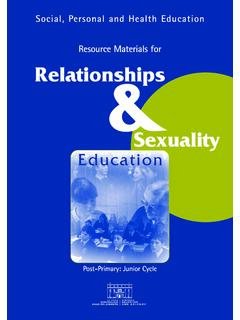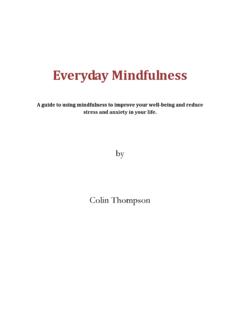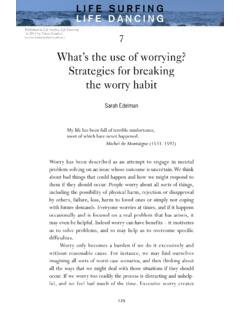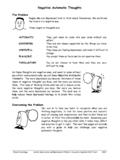Transcription of ASSERTIVE COMMUNICATION - SPHE
1 ASSERTIVE COMMUNICATION 2 This book is one of seven constituting On My Own Two Feet Educational Resource Materials for use in Substance Abuse Education Worksheets may be copied for educational purposes free and without special permission. Permission for additional use may be obtained from Dept. of Education and Science, Marlborough St., Dublin 1, Ireland An Roinn Oideachais agus Eola ochta, Department of Education and Science An Roinn Sl inte agus Leana , Department of Health and Children Mater Dei Counselling Centre ISBN No. 086387 044 9 2nd Edition 1997 3 ASSERTIVE COMMUNICATION 4 CONTENTS INTRODUCTION 5 GRID OUTLINING MATERIALS 10 LESSON 1 THE MOUSE, THE MONSTER AND ME!
2 14 LESSON 2 MY PERSONAL RIGHTS 24 LESSON 3 RESPONSIBLE AND CARING ASSERTIVENESS 31 LESSON 4 GETTING CLEAR 35 LESSON 5 HOW ASSERTIVE AM I? 41 LESSON 6 WHERE WILL WE START? 48 LESSON 7 JOINING IN 54 LESSON 8 GIVING AND RECEIVING COMPLIMENTS 58 LESSON 9 MAKING REQUESTS 64 LESSON 10 ASKING FOR HELP 70 LESSON 11 SAYING NO 78 LESSON 12 DEALING WITH PERSISTENCE 84 LESSON 13 ACCEPTING A NO 89 LESSON 14 POSITIVE SELF TALK 94 LESSON 15 CRITICISM 100 LESSON 16 RESOLVING CONFLICT 110 LESSON 17 ASSERTION CARDS 114 BACK-UP MATERIAL 118 5 INTRODUCTION Assertiveness training is really about.
3 Taking responsibility for direct, honest COMMUNICATION , Appropriate expression of feelings, Making choices and decisions that respect your needs and rights and those of others. ECOMING ASSERTIVE INVOLVES developing an awareness of what you need and want and believing that you have the right to ask for what you want. You treat yourself and your needs with the same respect and dignity as you re expected to give to others. Acting assertively is a way of developing self respect and self worth. There is a two-way interaction between self esteem and assertiveness.
4 You may be surprised that ASSERTIVE behaviour brings you a greater response and increased respect from others and this experience in turn enhances your self worth. Assertiveness training is essentially training in COMMUNICATION and social skills. It teaches a way of behaving that aims to achieve a win-win situation in interpersonal relationships. ALTERNATIVE BEHAVIOUR STYLES In order to be clear about what ASSERTIVE COMMUNICATION involves, it is helpful to describe the alternatives. Passive or submissive behaviour involves yielding to someone else s preference while discounting your own rights and needs.
5 You don t express your feelings or let others know what you need. The result is that they remain ignorant of your feelings or wants (and thus can t be blamed for not responding to them). Submissive behaviour also includes feeling guilty or as if you are imposing when you do attempt to ask for what you want. If you give others the message that you re not sure you have the right to express your needs or wants, they will tend to discount them. Some people are B 6 submissive because they are overly invested in being nice or pleasing to everybody. They may be afraid that the open expression of their needs will alienate someone on whom they feel dependent.
6 Aggressive behaviour, on the other hand, may involve communicating in a demanding, abrasive, or even hostile way with others. Aggressive people, typically, are insensitive to others rights and feelings and will attempt to obtain what they want through coercion or intimidation. Aggressiveness succeeds by sheer force, creating enemies and conflict along the way. It often puts others on the defensive, leading them to withdraw or fight back rather than co-operate. As an alternative to being openly aggressive, many people are passive-aggressive. Instead of openly confronting an issue, angry aggressive feelings are expressed in a covert fashion through passive resistance.
7 You re angry with your boss, so you re perpetually late for work. Instead of asking for, of doing something about what you really want, you perpetually complain or moan about what is lacking. Passive-aggressive people seldom get what they want because they never get their message across. Their behaviour tends to leave other people angry, confused and resentful. A final non- ASSERTIVE behaviour style is being manipulative. Manipulative people attempt to get what they want by making others feel sorry for or guilty towards them. Instead of taking responsibility for meeting their own needs, they play the role of victim or martyr in an effort to get others to take care of them.
8 When this doesn t work, they may become openly angry or feign indifference. Manipulation only works as long as those at whom it is targeted fail to recognise what is happening. The person being manipulated may feel confused up to this point; afterwards they become angry and resentful towards the manipulator. ASSERTIVE behaviour, in contrast to the above described styles, involves asking for what you want (or saying No ) in a simple, direct fashion that does not negate, attack, or manipulate anyone else. You communicate your feelings and needs honestly and directly while maintaining respect and consideration for others.
9 You stand up for yourself and your rights without apologising or feeling guilty. In essence, assertiveness involves taking responsibility for getting your own needs met in a way that preserves the dignity of other people. Others feel comfortable when you re ASSERTIVE because they know where you stand. They respect you for your honesty and forthrightness. Instead of demanding or commanding, an ASSERTIVE statement makes a simple, direct request, such as, I would really like to teach that Leaving Cert. Class . 7 ISSUES TO CONSIDER BEFORE USING THE ASSERTIVE COMMUNICATION MATERIAL Most people do not fall clearly into one category or another.
10 We all use a variety of behaviour styles and much depends on the situation and particular people involved. It is important to become aware of our style and how we can communicate most effectively in a given situation. While five styles are outlined here, only three major categories of Passive, ASSERTIVE and Aggressive are used in the materials. With more able students, teachers may wish to look at passive-aggressive and manipulative behaviour. They can draw on the descriptions above for this purpose. It is important to remember that the label should always refer to the behaviour and not to the person.

